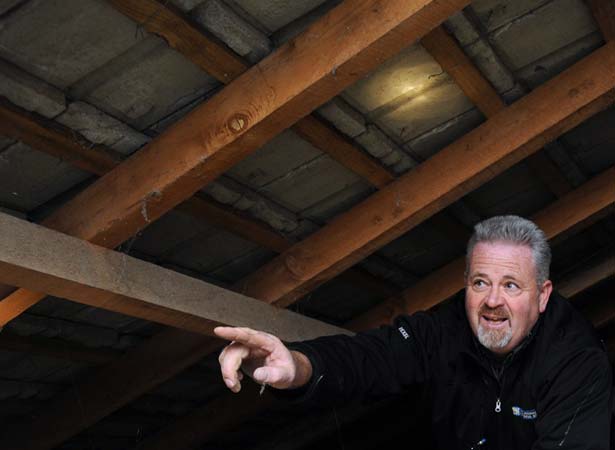
Māori houses (whare) were made of natural materials that had good thermal performance (such as raupō reeds) or kept out the wind (such as earth). European-style timber frame construction was less efficient at retaining heat, but it was not until 1978 that the level of thermal insulation required in new houses was specified by law.
Raupō reeds, and other natural plant materials, trap air and can provide reasonable thermal insulation. But they also catch fire easily and burn quickly; moisture can cause them to rot; and vermin enjoy living in the many gaps. While indoor fires did nothing for air quality, the smoke at least acted as a preservative and helped control insects.
European-style timber framing provided a more durable house, but gaps let in draughts and allowed heat to escape. In the 1940s the ceilings and walls of over 50% of new dwellings contained mould, and researchers concluded that the solution was to increase both thermal insulation and ventilation. However, until the early 1960s all house insulation material had to be imported and so in practice this was available only to wealthy or knowledgeable builders and owners.
In 1971 Waimairi County, on the northern fringes of Christchurch, became the first local authority to implement a thermal insulation by-law in an effort to address the region’s recurring air pollution problems. Better insulation would reduce the need for heating, and hence the size of fires and the resulting pollution. In 1972 Christchurch City followed Waimairi’s lead.
In April 1975, following the 1973–74 ‘oil shock’ and with hydro lakes at low levels, the government introduced an interest-free loan scheme to encourage the insulation of houses to minimum levels. Houses built by or for the Housing Corporation also had to meet standards.
On 25 November 1977, legislation was introduced making it compulsory for new homes to be insulated. The Minister of Local Government announced that the loan scheme had already helped insulate more than 50,000 homes; a similar number had been insulated outside the scheme. But only about 20% of new homes were being insulated, and as ‘in practice walls can only be insulated at the time a house is built’, a mandatory requirement was needed ‘for the purpose of preventing or reducing heat losses in residential buildings as an energy conservation measure’.
The Local Government Amendment Act came into force on 1 April 1978, since when all new houses have had to have minimum levels of thermal insulation. These requirements were increased in 2000, 2004 and 2007.
Contributed by Nigel Isaacs
External links
How to cite this page
'Thermal insulation required in NZ homes', URL: https://nzhistory.govt.nz/page/thermal-insulation-required-nz-homes, (Ministry for Culture and Heritage), updated 13-Oct-2020

Community contributions